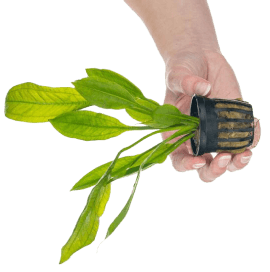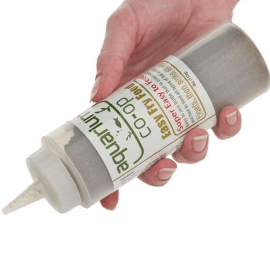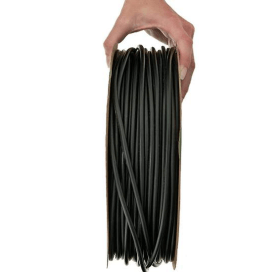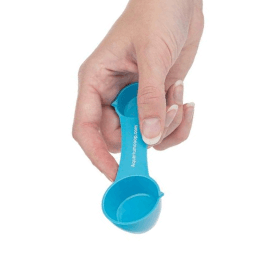Selecting The Right Algae Eater For Your Aquarium
Algae eaters are a staple inhabitant in many aquariums, serving a vital purpose within the ecosystem and often adding unique character to the community. These fish and invertebrates are constantly nibbling on algae, keeping your plants and hardscape clean, and they also tend to pick up food that is dropped by other fish. There are many different types of algae eaters to choose from, and adding the right clean up crew to your tank can be very rewarding!
Setting Expectations
Before we dive into this topic, it’s important to recognize that algae is a natural part of having aquariums, and that expecting a fish or invertebrate to do all the work for you isn’t realistic. The purpose of an algae eater in the aquarium ecosystem is to minimize the manual removal you have to do during maintenance sessions, and to help keep algae from overtaking the aquarium. Algae eaters do not completely replace other methods of algae control, and they shouldn’t be expected to.

Cleaning algae from the glass of an aquarium using an algae scrubber
To find out more about how to minimize algae in other ways, check out this section of our Help Center.
Tank Size
One of the first things to consider when adding any livestock to the aquarium is how well they will fit. Sometimes certain species like Siamese algae eaters are purchased as juveniles by unknowing hobbyists, only to quickly outgrow their tank, and be returned to the pet store as adults because they are now too large. This leaves the tank without an algae eater, and the fish without a home, so it is always recommended that you choose an algae eater that will do well in your aquarium for their entire lifespan.
For small aquariums, amano shrimp, pinocchio shrimp, and nerite snails are fantastic choices. Ramshorn and bladder snails are also beneficial parts of your algae eating and cleanup crew, and they often come as free hitchhikers on live plants.

A nerite snail and cherry shrimp
For medium sized tanks of 20-40 gallons, you have quite a few more options. Platies and mollies are active, colorful little fish that constantly pick at filamentous algae, detritus, and fallen food, and can be a great option for mid-size community tanks. A school of Otocinclus, stiphodon gobies, or panda garras might also be a good choice, especially if you have lots of surface algae.
For larger tanks of 40 gallons or more, or to pair with larger fish, the siamese algae eater is a classic choice. These fish are active, personable, and fun to watch, and generally get along with a variety of other species within a similar size range. Rosy barbs are also a great choice for bigger tanks if you are looking for a more colorful schooling fish. Their hardiness, larger size, and appetite for hair algae makes them a great match for mid-size and semi-aggressive community fish.

Rosy barb
There are plenty more great options for algae eaters out there, this is by no means a complete list of species that can fill this role in your aquarium. Do a little digging and visit your local fish store to see what they might have in stock, you might be surprised by the variety you find!
If your local fish store lacks variety, or doesn’t have a species you are interested in, you can check out these online retailers for more options.
Dietary Needs of Algae Eaters
Algae eaters require more than just algae in their diet, and most of them need natural materials like real driftwood and/or botanical matter like catappa leaves to ensure that they stay happy and healthy long-term. Algae eaters like snails and shrimp will typically need mineral supplements such as Easy Shrimp and Snail Shells to aid in shell growth and molting. Foods that are small in granule/pellet size and settle on surfaces, such as Magic Small Fish Feed, are a great option to add protein and important vitamins to the diets of your algae eaters. You can also feed gel foods such as Repashy, or sinking wafers to make sure they are getting all the nutrients they need. Your algae eaters are part of the community, and to get the most out of their natural algae-eating behavior, a well-rounded diet for good health is essential.

Siamese algae eater and kuhli loach enjoying a sinking wafer
Species and Personality Compatibility
Whenever you’re adding new livestock to your aquarium, it’s important to be aware of the individual personalities of your fish, as well as the natural behaviors of each species. If your betta has a penchant for pecking the eyestalks of your ramshorn and bladder snails, it might not be a good idea to introduce a nerite snail, but a few large amano shrimp may be a reasonable compromise. If you keep larger cichlids, a siamese algae eater might be the best option, since smaller fish could end up becoming a snack. It could be worth asking other hobbyists in a forum for their experience with compatibility if you’re not quite sure if things will work out. It’s always good to have a backup plan even if you are fairly confident that a new addition will fit right in, just in case.

Amano shrimp
Water Chemistry Compatibility
Just like any new addition to your tank, water chemistry plays a role in how well that potential new addition will fit in. Platies and mollies can make great algae eaters, however they do require harder water and higher pH than some other species. Many snail species also tend to experience shell erosion in low pH environments, making them better suited to tanks with a stable pH of above 7.0. Fish like otocinclus tend to not do as well in extremely high pH, and are better suited to pH levels of 6.0-7.5. If your tank has hardness levels and pH in the extreme low or extreme high range, you will need to be a little more selective about which species of algae eater you choose.

Otocinclus catfish
If you’re not sure what your water chemistry is, you can test using test strips like these to help you decide which algae eater is the right fit.
The Right Fish or Invertebrate For the Job
If you’re a little overwhelmed and still unsure which fish or invertebrate to choose for algae control, it can help to narrow down which type of algae you’re trying to control, and which species will do that job the best. Fish with mouths that face down and are shaped like a rasp or sucker are more likely to eat algae and biofilm from surfaces. These fish may clean up all the surface algae in your tank, and your glass will be very clean, but they might avoid hair and filamentous algae entirely. Fish with more “grabby” mouths such as platies, mollies, Florida flagfish, and siamese algae eaters are more likely to eat filamentous algae types in addition to surface algae, especially after the algae has started to die off due to other algae control measures. By looking at the way these fish and invertebrates naturally eat, as well as their size, you can typically make an educated guess about what kinds of algae they will consume, and how quickly they will consume it.

Hair algae infested aquarium
Part of the Ecosystem
Algae eaters can play an important role in keeping our aquarium ecosystems balanced by minimizing unsightly algae between maintenance sessions. In addition to being fantastic little helpers, they are super interesting to learn about, and can easily become one of your favorite aquarium inhabitants.
Here is some additional information on some of our favorite algae eaters.




